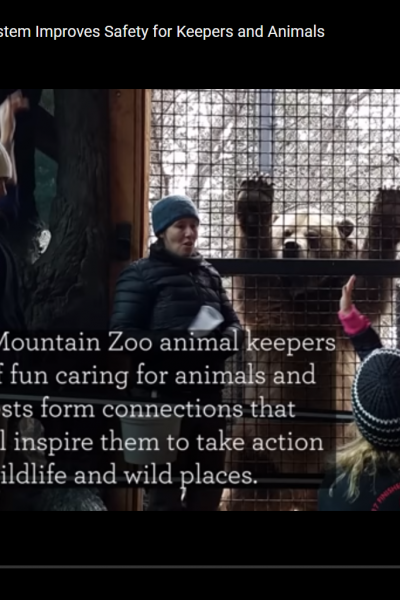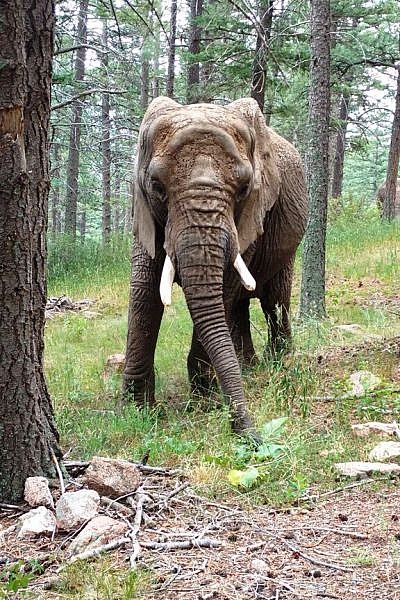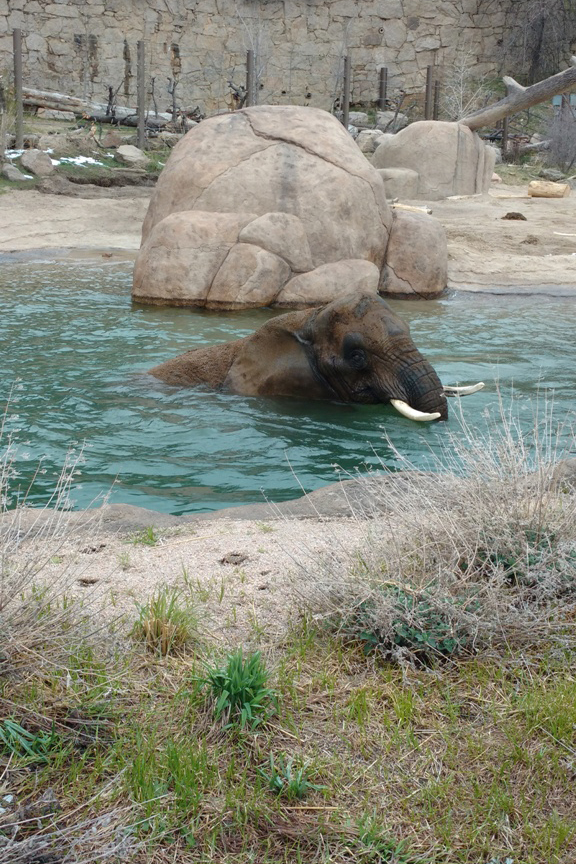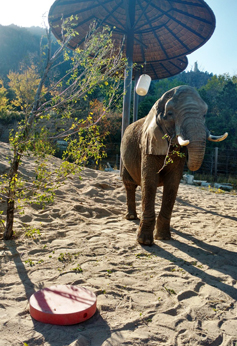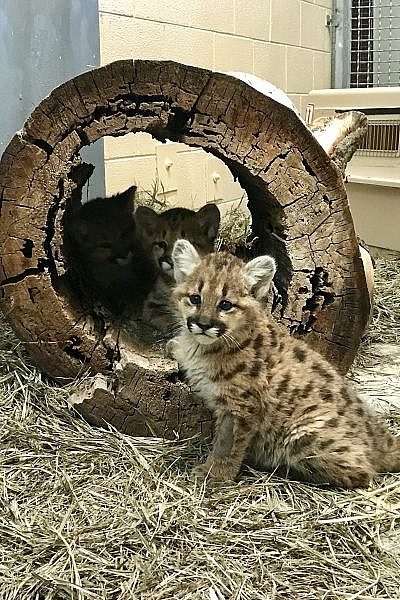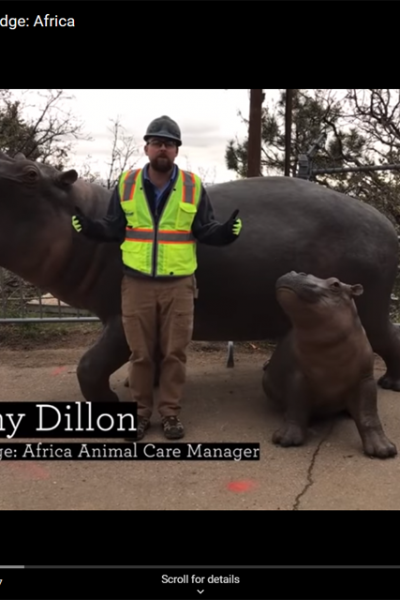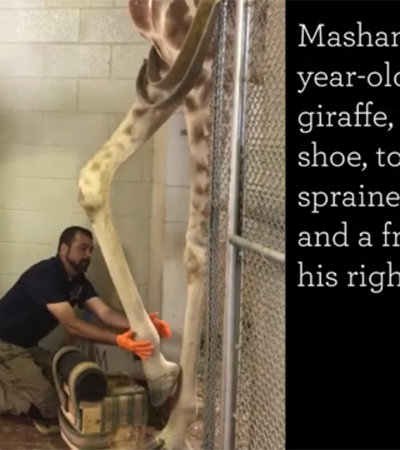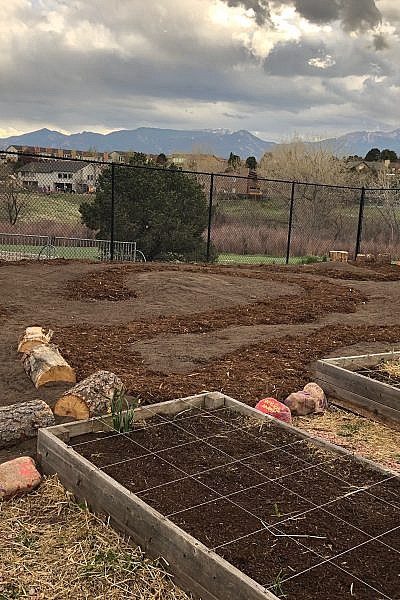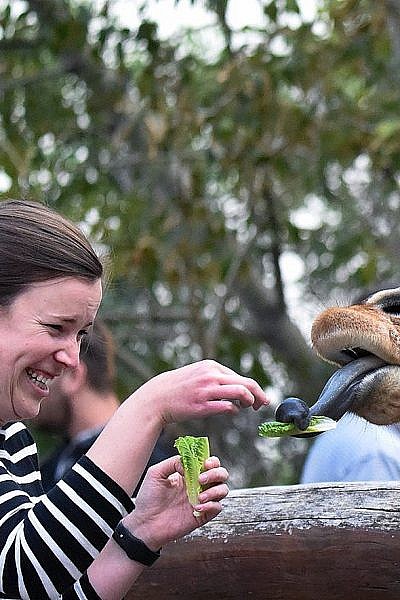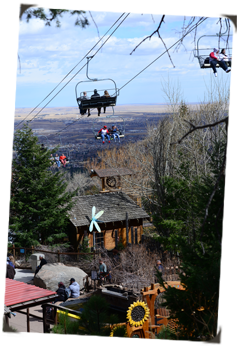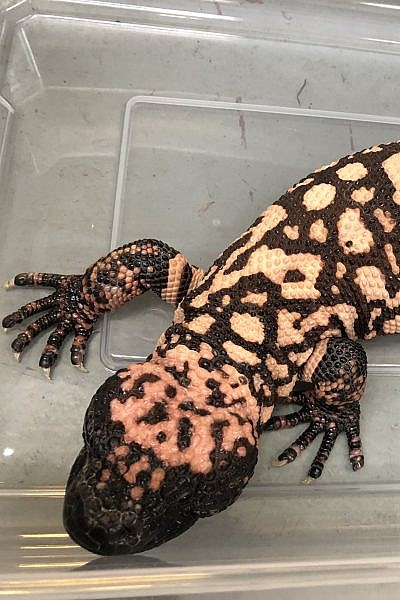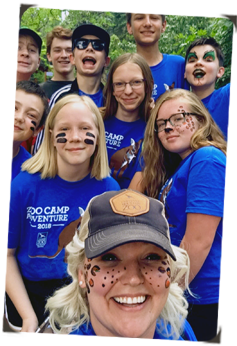The animal care and guest services teams at Cheyenne Mountain Zoo are a hard-working and dedicated bunch. Each day, they navigate their mountain Zoo, preparing it for thousands of guests to safely explore and make connections with the animals who live there. That means, at a minimum, working with the commissary team to prepare and deliver hundreds of pounds of food, collaborating with the veterinary and animal behavior staff to ensure their animals are healthy and enriched, maintaining the safety of guest viewing areas, and, yes, scooping a fair amount of poop.
What many might not ordinarily consider, though, is how they safely operate during their daily encounters with animals. Keepers have protocols (otherwise known as administrative controls) and protective barriers (also known as engineering controls) in place that protect them from accidental and potentially harmful encounters with animals. The systems vary depending on the animal and the space.
In Australia Walkabout, alligator keepers use extended tongs to feed the gators, along with a portable Plexiglas barrier that can be positioned between the keeper and the alligator being trained. In African Rift Valley, the boardwalk around the giraffe yard allows guests to get close enough to feed the giraffe, but it is also designed to protect them. The height of the railing protects guests and keepers from a giraffe’s natural defense in the wild: swinging its muscular neck. CMZoo’s elephant feeding area has a marked safety zone that keeps visitors and staff out of reach of the elephants’ powerful trunks, along with vertical bollards that allow keepers to access elephants (without sharing the same space) for training and medical care, but which are close together enough to prevent the elephant from squeezing between them.
All of these safety measures, and many more throughout the Zoo, help keepers and guests stay safe while interacting with animals throughout the Zoo. In areas that have potentially dangerous animal areas, keepers have adopted a system that not only limits the physical opportunities for danger, but also the mental opportunities.
Basia Dann and Courtney Rogers are animal keepers in Asian Highlands, where the majority of CMZoo’s big cats live. Statistically, big cats in human care are the most dangerous to keepers. Tigers, leopards and mountain lions make up a small but significant number of the animals they care for daily.
Dann and Rogers are collaborating with the rest of the keeper teams at CMZoo, CMZoo Animal Collections Director, Jeff Halter, and other Associations of Zoos and Aquariums (AZA)-accredited organizations, to adopt a safety system that is gaining traction nationally. The system establishes a series of engineered controls intended to make their time with these animals as human error-proof as possible.
The system, in a nutshell, involves restricting personal conversations; ongoing two-person visual and verbal confirmations of animal locations, actions taken and next steps; and a color-coded, two-lock system that ensures that two people must verify that a space is safe to enter, reducing accidental keeper access to a space where a dangerous animal might also have access.
“When we prepare to enter a dangerous animal space, we have agreed that all casual conversation has to stop, and we communicate strictly about the task at hand,” Dann said. “We say, out loud, every step we’re taking and vocally confirm each other’s observations and next steps. It’s a way to slow each other down during routine tasks, and to hold each other and ourselves accountable for checking every box in place to make sure we’re as safe as possible.”
The first step the keepers take is to agree upon their mission. Then, they confirm the location of the animals, rather than their absence.
While entering the Amur tiger dens at CMZoo, but before unlocking animal access doors, the keepers confirm with each other that the two male Amur tigers, Chewy and Thimbu, are in their outside yards. They confirm Chewy’s location in an outside yard, and then move on to locate Thimbu, who is lying in a sunny, grassy spot in the side yard, watching the keepers intently. Their goal is to place enrichment into one of the tiger dens, and then give Thimbu access to that den.
“I see Thimbu in the side yard,” Dann said.
“Yep, there’s Thim, creeping on us right there,” Rogers confirms.
Next, they ensure all doors between the tigers and the space they plan to enter are closed and locked with color-coded padlocks. The series of color-coded locks is designed to prevent one keeper from entering a space where a tiger might be.
Each keeper is assigned a color-coded key for the day. In this case, Dann has a blue key that only unlocks blue locks. Rogers is assigned a yellow key, for yellow locks. Each animal access door is secured with one blue lock and one yellow lock, so no door can be opened without both keepers present and in agreement that the door is safe to open.
The keepers call it creating a “blue and yellow bubble” around the potentially dangerous animal. When they enter a dangerous animal space, access points have those locks in place, preventing them from being opened accidentally by themselves or someone else in the area.
“Not only can we not enter a dangerous animal space by ourselves, but because the animal shift doors are locked, no one can accidentally move an animal into the same space as you,” Dann said.
After the locks are applied to the door, the keepers also check each other’s locks. Once they’ve completed their task and they’re ready to ask the animal to shift into another space, the process repeats, now with the locks on the doors that access the space the animal is moving to. With each area the animal or the keepers enter, the system ensures there’s a secure and locked door between them.
The process of shifting Thimbu, an Amur tiger, from one space to another takes about ten minutes, but that’s because the keepers have been practicing this new process and are taking it very seriously. Everyone agrees that additional time equals additional safety.
The system is not a CMZoo-original idea, and isn’t unique to the Zoo industry. It was first implemented in zoos by Palm Beach Zoo, in response to a tragic incident with an experienced keeper and a tiger. Halter is part of an AZA safety committee which shares many example practices developed in AZA-accredited zoos, including engineering controls.
“Just because another facility isn’t using this system doesn’t mean their system isn’t safe,” Dann said. “We’re working to collaborate with our fellow CMZoo keepers and keepers from other AZA-accredited organizations to see if this system would work for them, and to see what we can learn from them.”
The team says they think their process will keep evolving, and that the collaboration with other animal keepers is the best way to learn what’s working and what might have potential to be an unsafe situation. Dann is scheduled to present what the CMZoo big cat teams have learned, at a national zookeeper conference in July.
Keepers demonstrate system in behind-the-scenes tiger den:
